Situated near stunning Lake Chautauqua on the grounds of the Chautauqua Institution, Jeff and Suzanne Watters’ summer lake house benefits greatly from its beautiful, historic location. Following a sustainable renovation, the relationship works both ways, bringing the home into complete harmony with nature and place.
As co-creator of Sustainable Sewickley, an organization dedicated to promoting, sharing, and adopting sustainability efforts in the community, “I think about sustainability in whatever I do,” says Suzanne. “Every day, every decision I make. [Choices] may seem small but you have to think what kind of impact it’s going to have over the years.”
Living sustainably is one thing; building it is another. Taking the leap into making a LEED-certified home involved a steep, and important, learning curve.
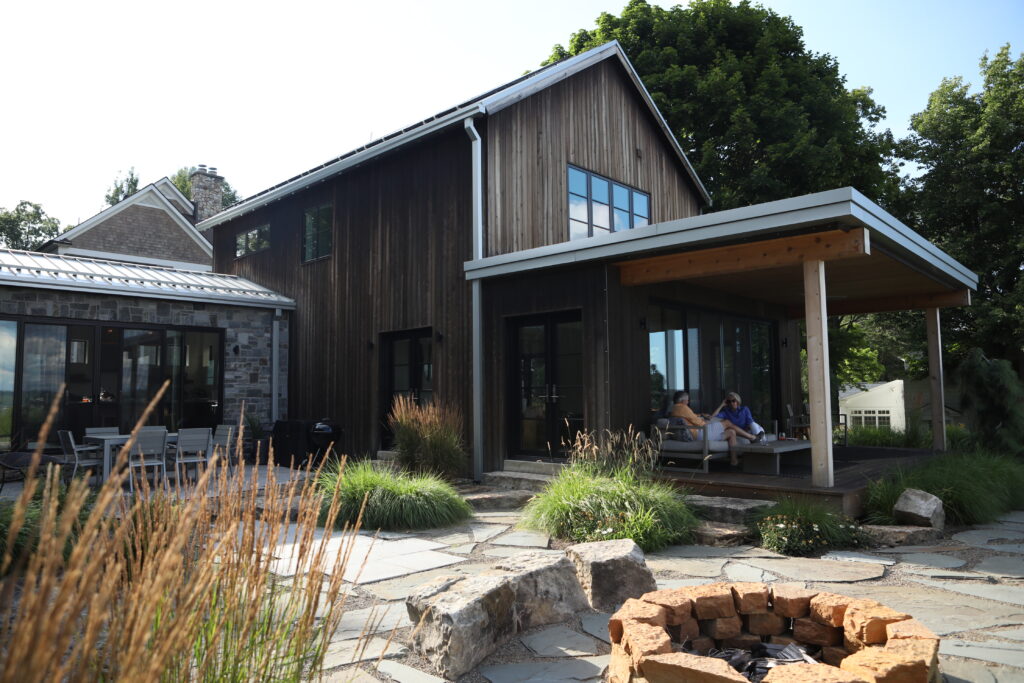
Creating a Green Home
The couple worked with Cincinnati-based Green Building Consulting to align on scope, objectives, and budget before diving into design. The Watters recommend that homeowners interested in gaining LEED certification (which stands for Leadership in Environmental and Energy Design) to do the same. “We were far from fluent or comprehensive in the initial framing of our desired scope. We also learned that the path to LEED can be a bit circuitous and the rating criteria a bit opaque, even for the experts!” says Jeff.
With the help of a talented team, including Serena Sturm Architects to lead sustainability design and Chautauqua’s Chris Keefe Builders, the home is now Platinum LEED-certified.
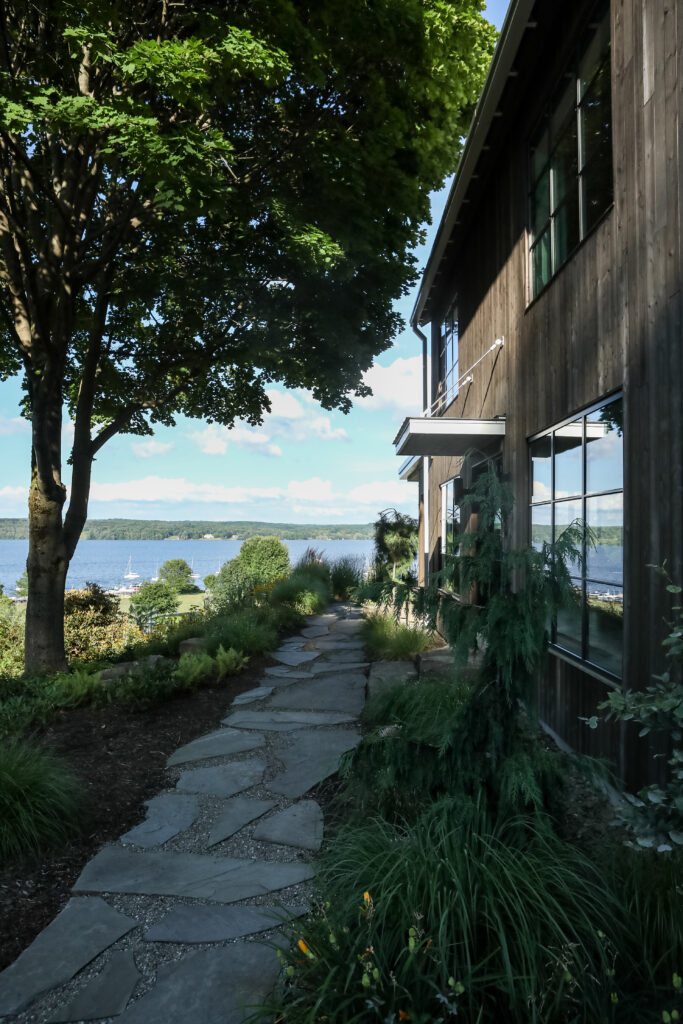
Meeting the Standard
Qualifications for this rating, the highest available, include water and energy efficiency, and smart material management and landscaping, all verified by rigorous third-party performance testing and inspections. Platinum LEED status was granted 18 months after the project’s completion.
Every step of the way, the couple led with a sustainability-focused mindset, hosting estate sales for items they no longer needed, donating to construction reuse centers during demolition, and repurposing as many materials as they possibly could during the rebuild.
Construction maintained as much of the legacy structure as possible, including a portion of the foundation and framing. One of the big projects was installing the roof-to-foundation insulation wrap. This is a critical element in ensuring a tight seal and long-term energy efficiency in sustainable homes. Plus it adds extra insulation and high-efficiency windows and doors.
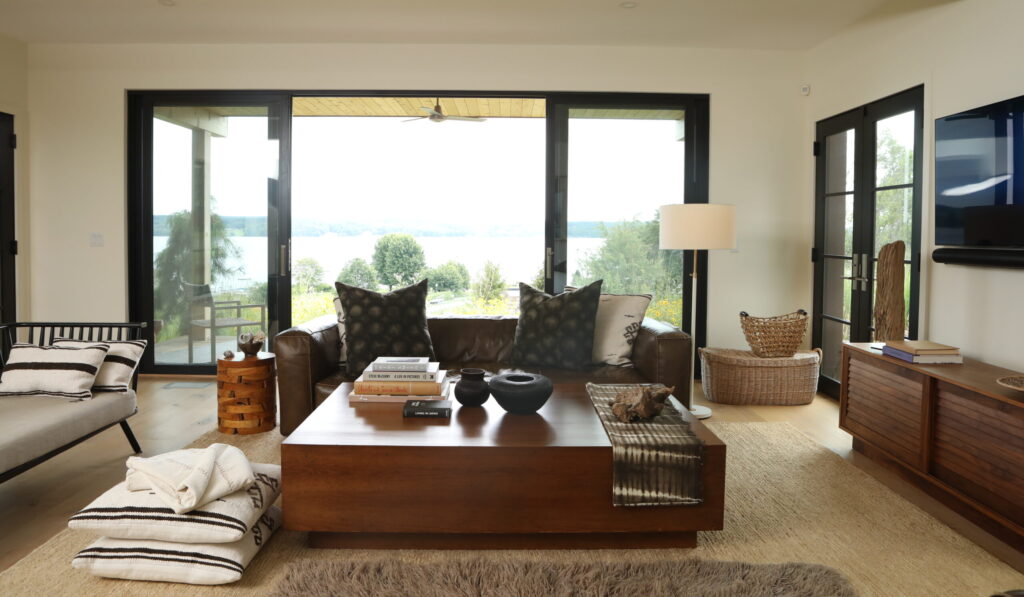
Using Clean Energy
The house doesn’t use fossil fuels for energy. Instead, it has a PV array, or solar panels, and runs on a multiunit electric heat pump powered by renewable wind and solar energy sourced through their local energy supplier. A multiunit heat pump, ENERGY STAR appliances, insulated plumbing, LED lightbulbs, and an electric vehicle charging station in the garage also contribute to the home’s low-carbon footprint. According to the US Green Building Council, LEED-certified homes use 30 to 50 percent less energy than typical homes.
They called on Sewickley-based dsjDESIGN for the home’s layout and general architecture, and simplicity guided the aesthetic. “We wanted the focus to be on the connection to the land,” says Suzanne.
Reclaimed stone steps and low-maintenance exterior siding from reSawn Timber Co. complete the exterior, which is visually in the style of other clean-lined, wood-clad homes in the surrounding area.
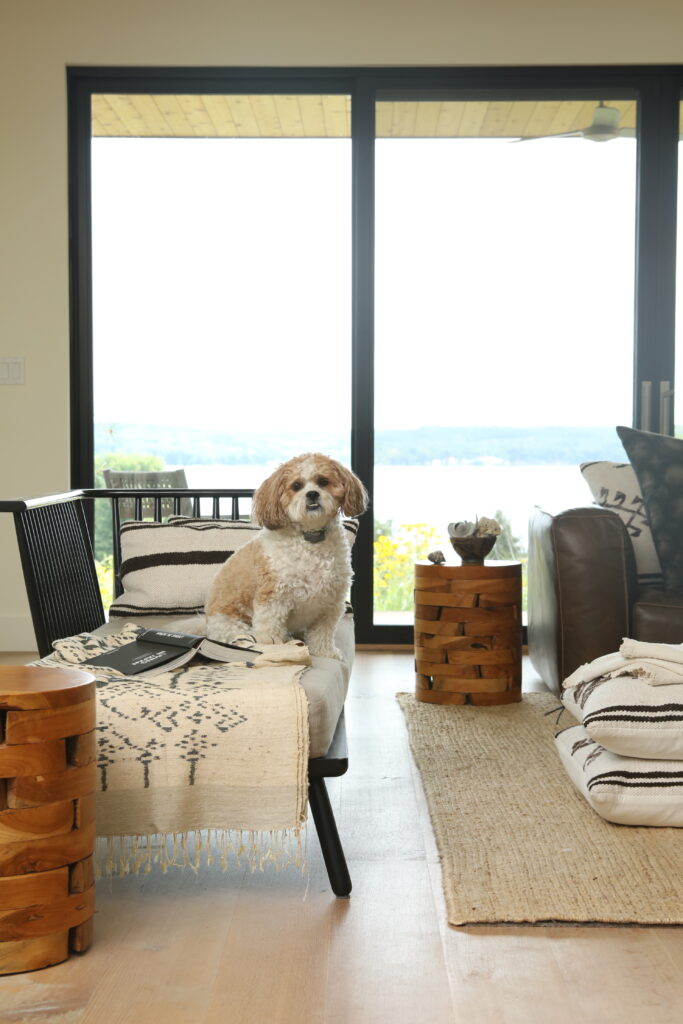
Handcrafted Not Factory Made
Artisan-made textiles and fixtures, locally made where possible, bring the interior to life. “What couldn’t be sourced locally was sourced as intentionally and sustainably as possible,” says Suzanne.
Those elements include FSC-certified oak floors from Allegheny Mountain Hardwood Flooring; locally sourced limestone counters; handmade tile made with a percentage of recycled material from Limelight Tile & Ceramics; and metal railings, lighting, towel bars, and stove hood made by local metalsmith, Emerson James Inc. Wool carpeting from ProSource replaces typical carpet made with plastic-based fibers; floor tile from Architectural Clay Products includes a percentage of recycled content; and select light fixtures are made with recycled paper. Local furniture store, Room, helped source dining chairs with recycled upholstery and light fixtures.
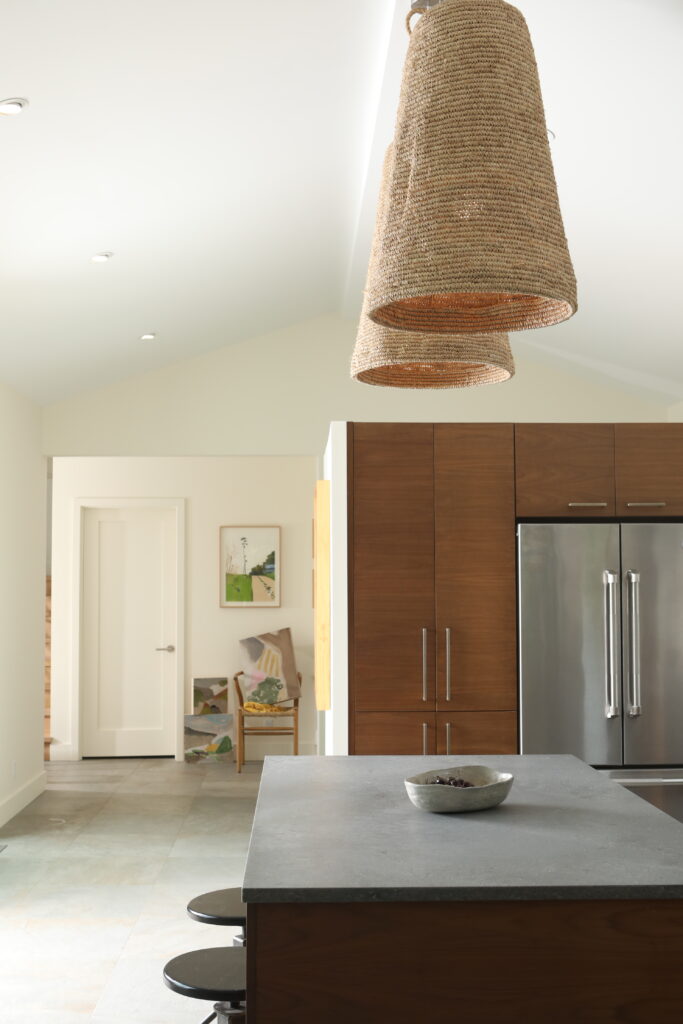
Sustainability Beyond the Construction
Suzanne, an artist, is also “on a mission to make my art practice as sustainable as possible.” This includes everything from reusable materials to eschewing acrylic paint (which contains plastic) and making her own from organic materials like cabbage, blackberries, carrot leaves, and black walnuts and ashes from her fire pit.
Her nature-inspired art bedecks the home, along with a variety of accessories, wares, and handmade furniture from local makers.
Wherever possible, finishes are nontoxic, including zero-VOC paint and Rubio Monocoat, a zero-VOC hardwax oil wood finish, on the floors.
The air filtration HVAC system brings filtered outdoor air inside and low-flow faucets and fixtures promote reduced water use.
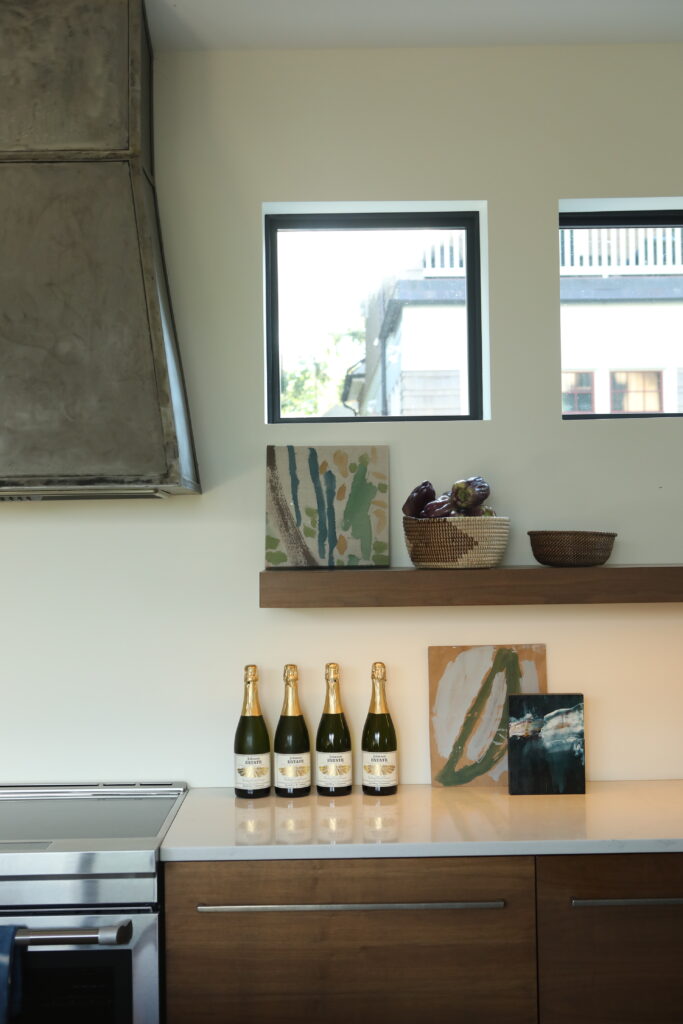
Fueling the Earth
Native grasses, wildflowers for pollinators, a composting station, and raised beds for growing food fill the biodiverse garden, designed by Joseph Rollman. One thing you won’t find is monoculture, the typical American expanse of green lawn that needs to be cut weekly. In its place is permeable hardscape, including walking paths, courtyard patio, and driveway, which supports water management. This is supported through bioswales that redirect stormwater runoff. Plus, rain gardens that returns water into the ground, rather than sewers help too.
If it all sounds a bit complex, well, it was. But Suzanne and Jeff agree that their efforts were worth it. They encourage others to implement green building practices in any way that is manageable for their lifestyle or budget. “Every step counts,” says Suzanne.
Summers in their home feel like a retreat. “A more sustainably built house is so quiet,” says Suzanne. “The air is really clean, and it feels so well built, natural, and beautiful. We love being there.”
“We hope that our role as ‘first mover’ in the community will serve as inspiration for other Chautauqua Institution homeowners and homeowners everywhere to emulate,” says Jeff.
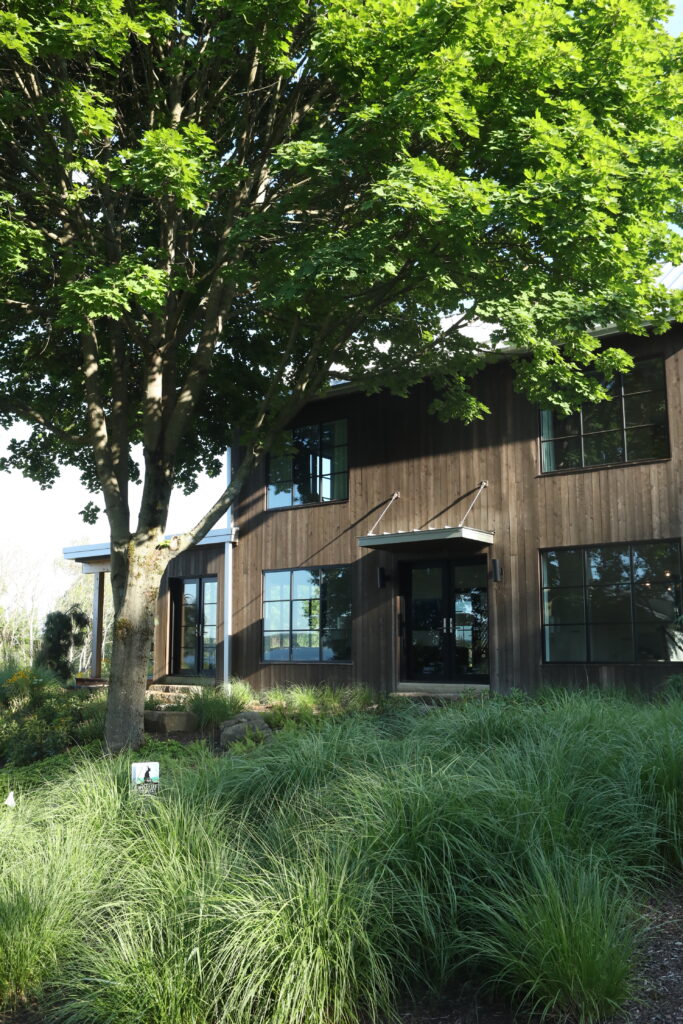
Story by Nicole Barley / Styling by Keith Recker and Justin Matase / Photography by Laura Petrilla

Subscribe to TABLE Magazine’s print edition.